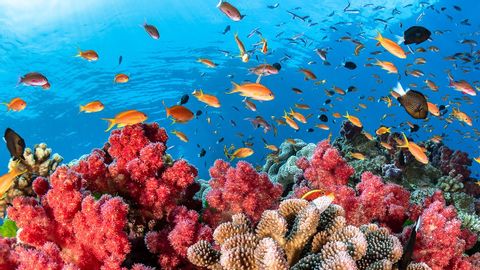
Subtitles & vocabulary
Austraila's Great Barrier Reef - National Geographic (With Subtitles)
00
不信中原不姓朱 posted on 2016/05/01Save
Video vocabulary
life
US /laɪf/
・
UK /laɪf/
- Noun (Countable/Uncountable)
- All the living things e.g. animals, plants, humans
- Period of time things live, from birth to death
A1
More live
US /liv/
・
UK /lɪv/
- Intransitive Verb
- To be alive
- To make your home in a house or town
- Adjective
- Being broadcast as events happen, not recorded
- Carrying electric current; able to give a shock
A1
More space
US / spes/
・
UK /speɪs/
- Noun (Countable/Uncountable)
- Empty area kept for a specific reason, like a car
- Empty area with nothing in it
- Transitive Verb
- To make a certain distance or time between
A1TOEIC
More Use Energy
Unlock All Vocabulary
Unlock pronunciation, explanations, and filters
